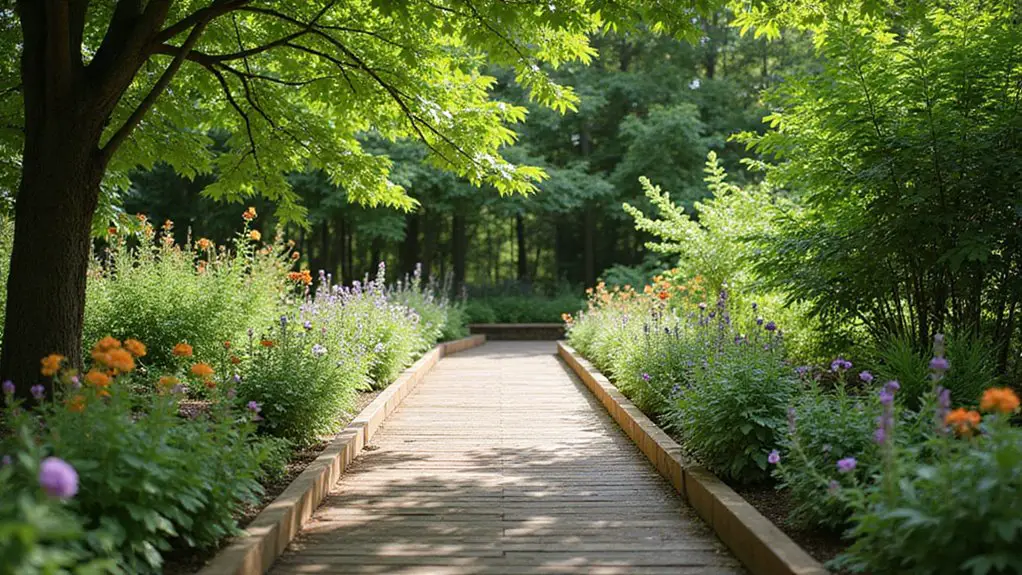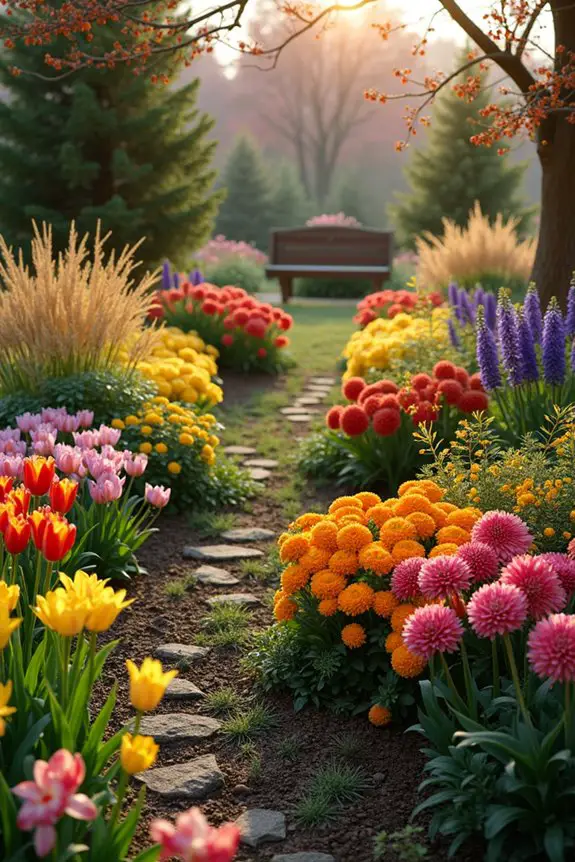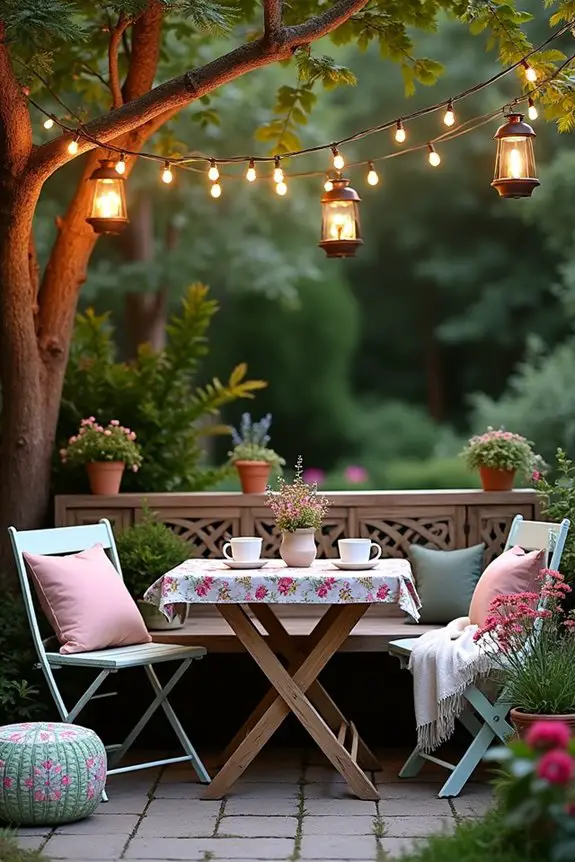Wood garden edging serves as an effective means of defining outdoor spaces while adding a natural appeal. Various wood types and installation techniques can yield distinct aesthetics. The durability of wood edging varies, influenced by both the material chosen and maintenance practices. Additionally, reclaimed wood presents unique opportunities for creativity. Exploring the possibilities of wood garden edging can transform a garden, but what specific elements should one consider for the best results?
Types of Wood for Garden Edging
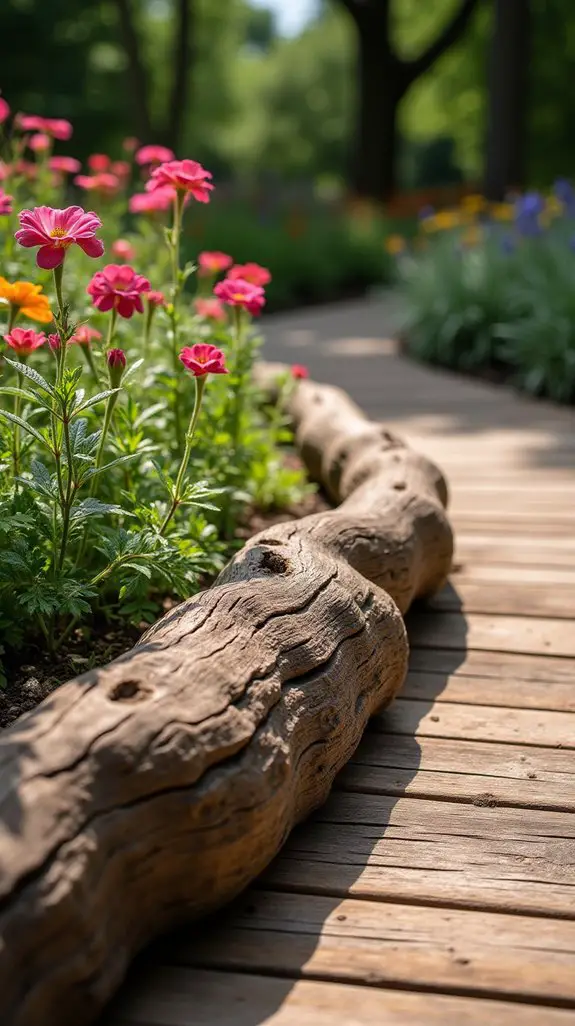
Wood selection is a critical aspect of creating effective garden edging. Various wood types offer unique benefits: pressure-treated wood guarantees durability against decay, while cedar boasts natural resistance to insects.
For an eco-friendly choice, reclaimed wood adds rustic charm. Pallet wood serves as a budget-friendly option but requires preparation.
Redwood is favored for its soft appearance and weathering qualities, while teak outlasts rot without chemical treatments.
Each type presents distinct characteristics, accommodating different aesthetic preferences and functional requirements, allowing gardeners to enhance their outdoor spaces effectively. Incorporating materials like bamboo fence panels can also provide a unique and sustainable boundary for gardens.
Choosing the right wood is crucial for long-lasting and appealing garden edging solutions.
Installation Techniques for Wood Edging
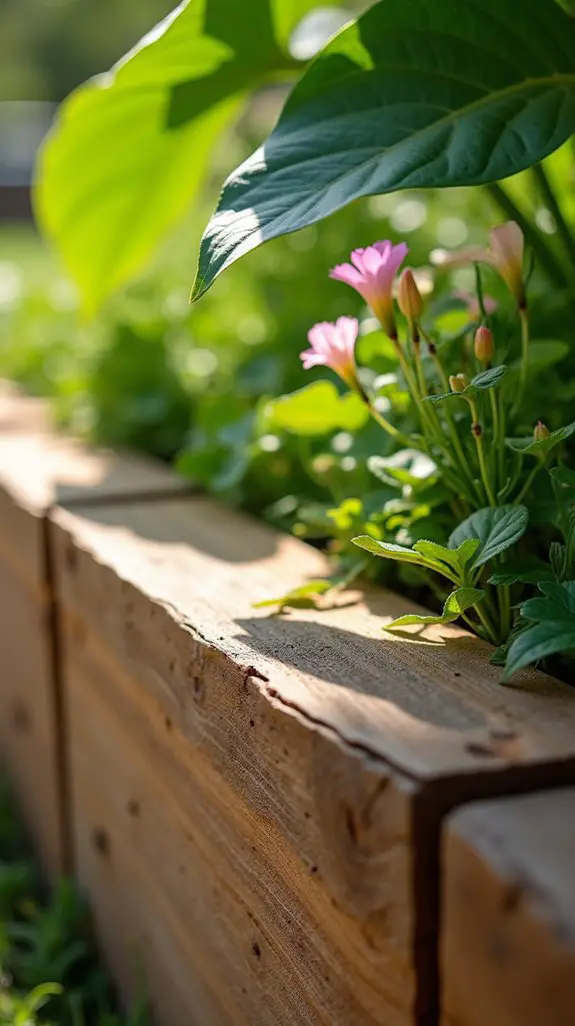
Installing wood edging effectively requires careful planning and execution to guarantee both stability and aesthetic appeal.
Initially, a shallow trench is dug to accommodate the wood, affirming proper placement. Clearly marking the intended edges serves to facilitate accuracy during installation. For increased stability, securing the wood with stakes or screws is recommended. It’s important to choose quality materials, such as grade A garden paving slabs, to complement the overall design of the outdoor area.
When curving the edging, particularly with redwood, cutting the wood as needed enhances the overall shape. Additionally, for structures that may involve stones or gabion walls, meticulous placement is essential.
Utilizing a metal raised bed kit can further enhance the overall design and functionality of your garden space, ensuring a cohesive look with sturdy borders.
These techniques assure durable garden borders that maintain their form and enhance the integrity of the garden space.
Visual Aesthetics of Wood Edging
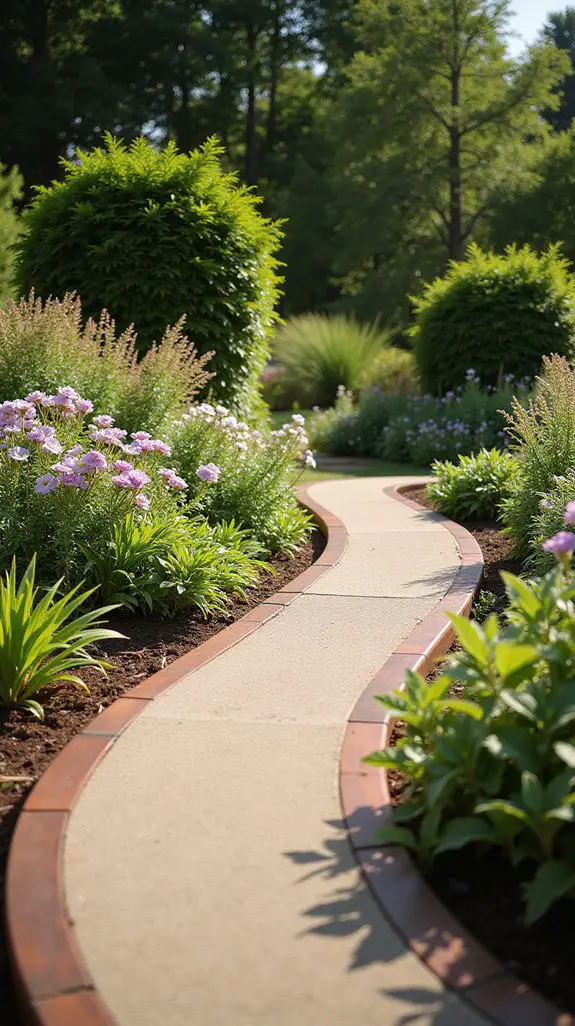
A well-designed garden often highlights the aesthetic qualities of its features, and wood edging serves as a vital element in achieving this visual appeal.
The natural beauty of wood enhances the garden’s overall appearance, providing a warm and inviting atmosphere. Customization options, such as various wood types, stains, and finishes, allow gardeners to tailor the edging to match their desired aesthetic.
Additionally, wood edging creates a distinct contrast between garden beds and surrounding greenery, which helps define spaces. Techniques like the herringbone pattern or rustic log borders provide sophistication and charm, enriching the garden’s visual intrigue and character. Furthermore, using materials like large plastic watering cans can complement the wood edging, enhancing the practicality and aesthetics of your garden setup.
Durability and Longevity of Wood Edging
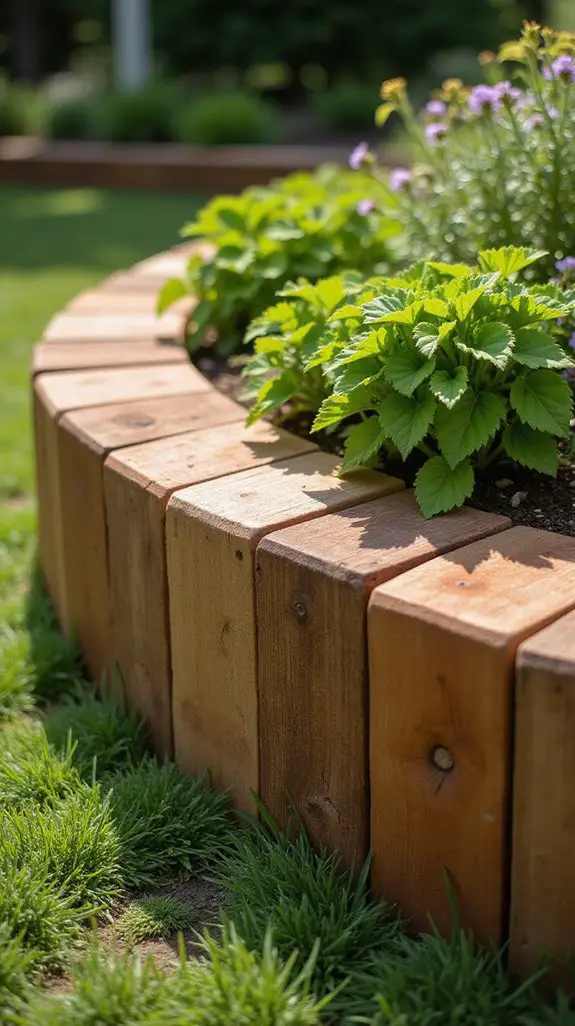
While many gardeners prioritize aesthetics, the durability and longevity of wood edging play an essential role in maintaining a garden’s structure and appeal over time.
Wood types such as teak and cedar offer natural resistance to rot and insects, considerably extending their lifespan. Properly treated wood provides weather resistance, enabling it to withstand harsh environmental conditions. In fact, fruit tree pruning practices can benefit from understanding the importance of durable edging when managing garden layouts. Furthermore, using quality bark mulch bags helps in initializing healthy soil conditions, which is crucial for garden longevity. Additionally, utilizing a seed starter greenhouse can facilitate the growth of new plants, enhancing the garden’s diversity and vitality.
Additionally, wood edging aids in preventing soil erosion, further enhancing its practicality. With minimal maintenance required for treated options, gardeners can enjoy cost savings over the long term. Using a bulb planter tool can significantly improve the efficiency of planting in garden beds bordered by durable wood edging.
Ultimately, selecting durable wood enhances both the functionality and beauty of outdoor spaces.
Unique Styles of Wood Edging
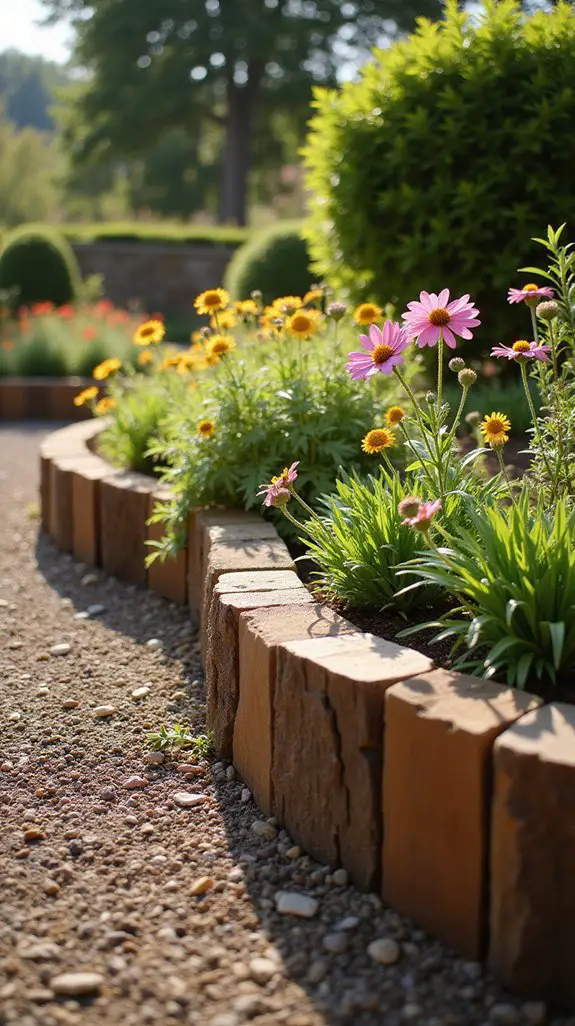
Choosing the right style of wood edging can enhance both the functionality and aesthetic appeal of a garden. Unique options such as herringbone designs create visual intrigue with their zigzag patterns, while curved redwood edging adds a graceful, flowing appearance. Railroad ties offer a robust, rustic border that clearly delineates different zones within the garden. For a contemporary touch, gabion walls can function as both edging and additional seating, merging style with utility. Additionally, wattle fencing utilizes natural materials to enhance woodland charm, making it an eco-friendly choice that complements various landscaping themes. Furthermore, incorporating quality brick garden edging can provide a stunning contrast to wood, enriching your garden’s overall design. Using proper green bean trellis kits can also support climbing plants beautifully alongside these wood edges, promoting a lush garden appearance. Incorporating a quality seed starting soil mix can further boost the growth of plants near these wood edges, promoting a lush garden appearance.
Cost-Effective Wood Options for Edging
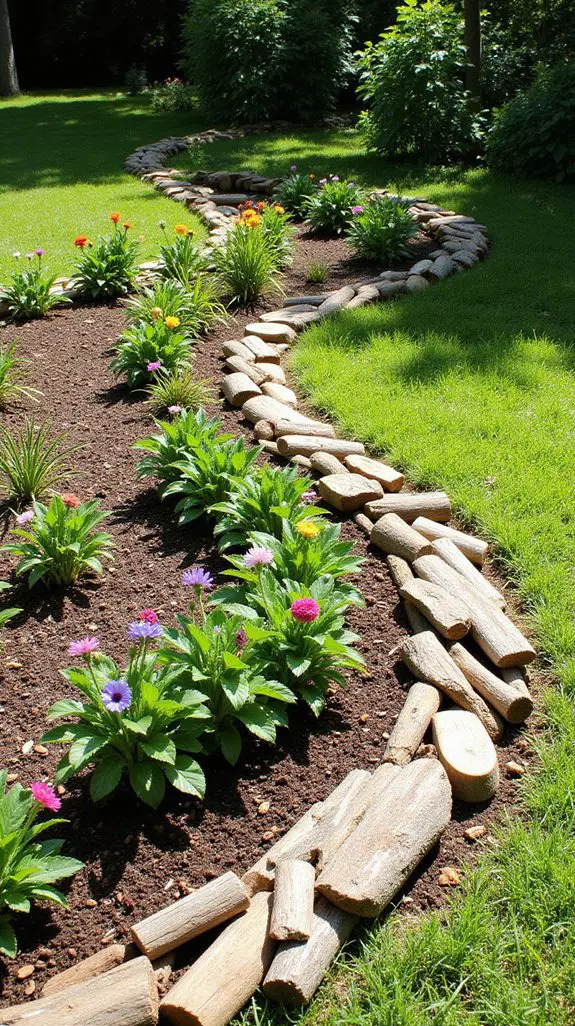
Budget-conscious gardeners often seek cost-effective wood options for edging that provide both functionality and visual appeal. Pallet wood serves as an affordable choice, readily available from local sources, although it requires thorough preparation for durability. Additionally, incorporating rabbit fencing solutions can help protect the garden from any potential nibblers while maintaining aesthetic value. When planning your garden layout, using a soaker hose splitter can efficiently manage water distribution to newly edged areas. Using starter fertilizer can help promote healthy growth in your newly defined garden spaces, ensuring that plants thrive with essential nutrients.
Reclaimed wood not only offers a unique rustic charm but also promotes eco-friendliness, making it an attractive option. Pressure-treated wood presents a long-lasting solution and is widely accessible at hardware stores. Cedar wood, while slightly pricier, is valued for its natural resistance to decay and insects. These choices allow gardeners to create defined spaces without exceeding their budgets, marrying economy with style effectively. Additionally, using proper fruit tree support stakes can enhance the stability of various plants in the garden.
Enhancing Garden Structure With Edging
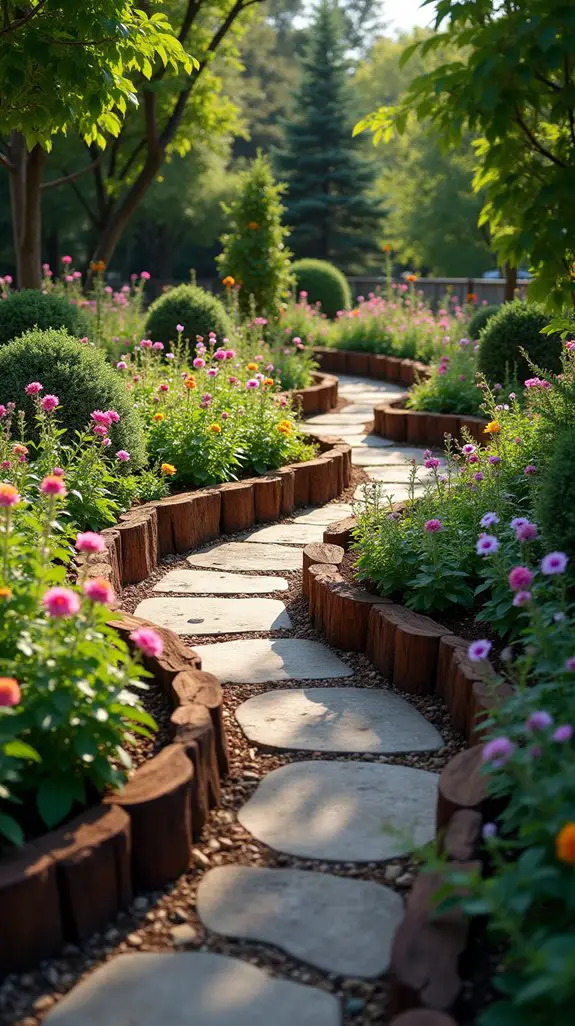
To create a well-defined garden structure, utilizing wood edging can greatly enhance both functionality and aesthetics. Different types of wood, such as cedar and redwood, provide natural beauty while resisting decay. Additionally, combining wood edging with durable steel options can provide a striking contrast and increased longevity. For homeowners seeking low-maintenance solutions, vinyl garden fence panels offer an alternative that withstands the elements while maintaining a polished look. Furthermore, incorporating a digital soil moisture meter can ensure that your plants receive the optimal amount of hydration, enhancing their growth.
The installation process involves techniques like trenching and securing the wood for stability. Visual aesthetics play a significant role, with options for customization through stains and finishes that can complement the garden design. One popular choice among gardeners is the cedar raised garden bed, which not only adds structure but also elevates plants for easier maintenance.
Patterns, such as herringbone, add sophistication, while rustic styles, including log borders and wattle fencing, contribute charm. Overall, wood edging serves to clearly delineate spaces, effectively enhancing the garden’s structural integrity and appeal.
Eco-Friendly Wood Edging Choices
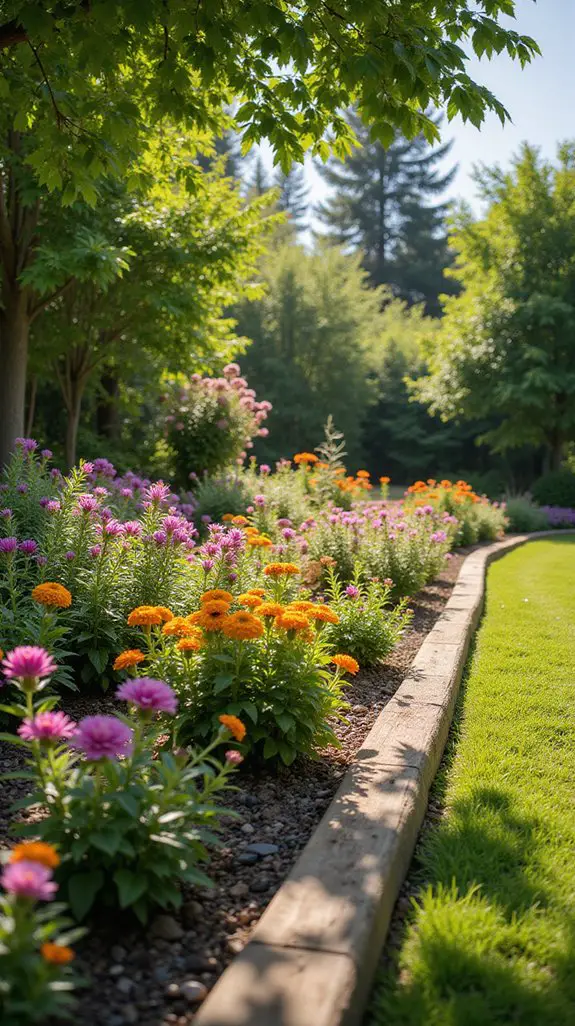
Wood edging not only enhances garden structure but can also be environmentally friendly.
Reclaimed wood is a prime choice, repurposed from old buildings, offering both character and sustainability. Cedar wood is another excellent option, naturally resistant to decay and insects, thereby minimizing the need for chemical treatments.
Additionally, pallet wood provides a cost-effective and easily sourced solution, contributing to a more eco-conscious approach. Teak, while more luxurious, boasts impressive rot and insect resistance without harmful chemicals.
These choices not only maintain aesthetic appeal but align with environmentally responsible gardening practices, helping to define outdoor spaces sustainably.
Incorporating Patterns Into Wood Edging Design
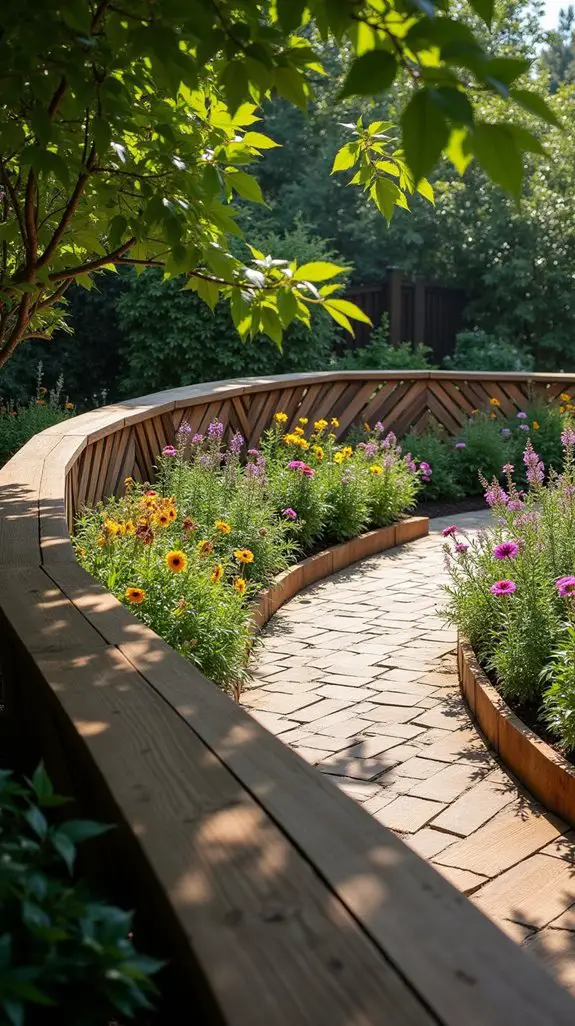
While many gardeners focus solely on functionality when choosing wood edging, incorporating patterns into the design can greatly enhance the visual appeal of outdoor spaces.
Patterns such as herringbone add sophistication, creating an eye-catching element that draws attention. Curved designs can provide a natural flow, complementing garden contours seamlessly.
Additionally, alternating wood types or finishes can introduce contrast, enhancing the overall aesthetic. Using stacked logs or railway ties can deliver rustic charm while defining distinct areas within the garden.
Ultimately, thoughtful pattern integration transforms ordinary wood edging into a dynamic, decorative feature that enriches the outdoor experience.
Seasonal Maintenance for Wood Edging
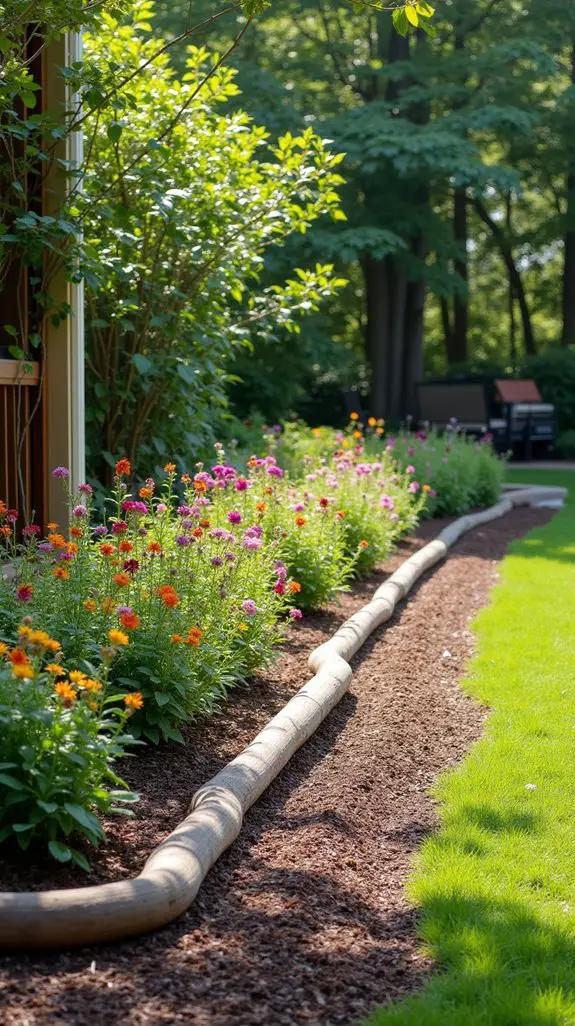
Incorporating intricate patterns into wood edging can elevate a garden’s visual appeal, but maintaining those well-designed borders throughout the seasons is equally important.
Regular inspections should occur to identify any signs of rot or insect damage, particularly after heavy rains or harsh winters. It’s advisable to reapply protective stains or sealants annually to enhance longevity. Additionally, using an automatic irrigation timer can help ensure your garden receives consistent moisture, supporting the health of both plants and edging.
In spring, check the stability of the edging and replace any dislodged pieces. During fall, clear debris and fallen leaves to prevent moisture buildup.
Proper seasonal maintenance guarantees that wood edging remains aesthetically pleasing and functional, preserving the overall beauty of the garden.
Creative Uses of Reclaimed Wood in Edging
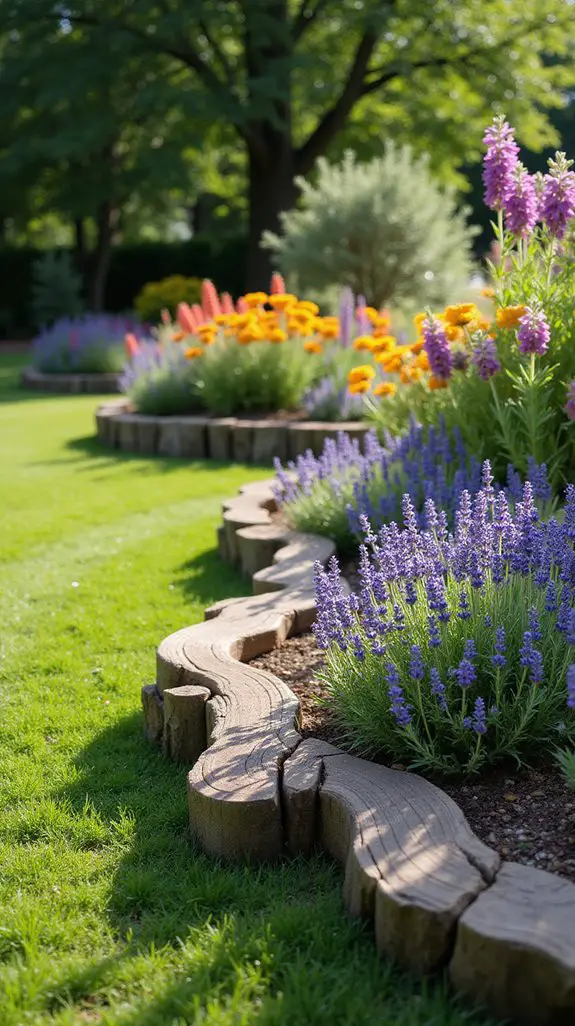
Reclaimed wood offers a unique opportunity to add character and sustainability to garden edging. Gardeners frequently utilize salvaged materials from old barns, fences, or furniture, providing a rustic charm that new wood cannot replicate.
Creative applications include creating tiered raised beds, using thick planks for bold borders, or even incorporating circular designs around trees or flower beds. Additionally, mismatched pieces can evoke an eclectic feel while maintaining an environmentally friendly approach.
Transforming reclaimed wood into edging not only enhances aesthetics but also tells a story, enriching the outdoor space with history and personality.
Conclusion
To sum up, wood garden edging presents countless opportunities for enhancing outdoor spaces through creative design and sustainable choices. By exploring various types of wood, innovative installation techniques, and unique styles, gardeners can achieve both functionality and aesthetic appeal. The versatility of wood enables the incorporation of intriguing patterns and the use of reclaimed materials, promoting eco-friendliness. With proper maintenance, wood edging can provide lasting beauty and definition to gardens, making it a worthwhile investment for any gardening enthusiast.

